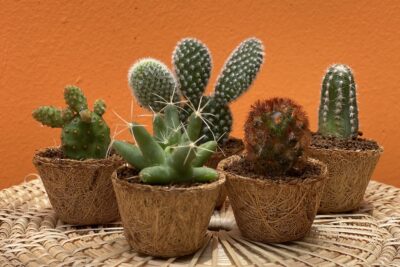
Fixing Brown Leaves on Succulents: Troubleshooting Guide

Succulents are popular plants known for their ability to store water in their fleshy leaves, stems, and roots. Their unique appearance and low maintenance requirements have made them a favorite among gardeners and plant enthusiasts. However, one common issue that succulent owners often face is the appearance of brown leaves. Brown leaves can be a sign of various problems and can be concerning for succulent owners who want to keep their plants healthy and thriving.
We will explore the common causes of brown leaves on succulents and provide a troubleshooting guide to help you fix the issue. We will discuss factors such as overwatering, underwatering, sunburn, pests, and diseases that can contribute to the browning of succulent leaves. We will also provide tips and techniques for proper care and maintenance to prevent brown leaves and keep your succulents looking vibrant and beautiful. By following this troubleshooting guide, you will be able to identify the underlying problem and take appropriate measures to revive your succulents and promote their overall health.
- Adjust watering schedule to prevent overwatering or underwatering
- Move succulents to a location with more or less sunlight, depending on their needs
- Check for pests such as mealybugs or spider mites and treat accordingly
- Ensure proper drainage by using well-draining soil and pots with drainage holes
- Trim away any brown or dead leaves to promote new growth
- Avoid using tap water with high mineral content; use filtered or distilled water instead
- Provide proper air circulation to prevent fungal infections
- Avoid temperature extremes and protect succulents from frost or heat
- Fertilize regularly with a balanced succulent fertilizer
- Repot succulents if they have become root-bound
- Frequently Asked Questions
Adjust watering schedule to prevent overwatering or underwatering
One of the main reasons why succulent leaves turn brown is due to improper watering. Succulents have unique water requirements, and finding the right balance is crucial for their health. Here are some tips to help you adjust your watering schedule:
1. Understand your succulent's water needs
Each type of succulent has different water requirements. Some varieties, like Echeverias, prefer infrequent watering, while others, like Haworthias, require more regular moisture. Research the specific needs of your succulent to ensure you are providing the appropriate amount of water.
2. Check the soil moisture
Before watering, always check the moisture level of the soil. Stick your finger about an inch into the soil and see if it feels dry or moist. If it's still damp, hold off on watering and check again in a few days. Overwatering can lead to root rot and brown leaves.
3. Adjust watering frequency
If you notice brown leaves, it may be a sign of overwatering. Reduce the frequency of watering and allow the soil to dry out between each watering session. Remember, succulents are adapted to survive in arid conditions, so they can tolerate some drought.
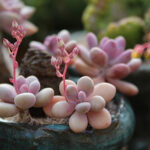 Is My Leaning Succulent a Problem? Get Answers Here!
Is My Leaning Succulent a Problem? Get Answers Here!4. Water deeply but infrequently
When you do water your succulent, make sure to give it a thorough soak. Water deeply until the excess water drains out from the bottom of the pot. This helps ensure that the roots receive adequate moisture. However, avoid letting your succulent sit in standing water, as this can also cause root rot.
5. Consider the season and environment
The time of year and the environment in which your succulent is growing can also affect its water needs. During hot summer months, succulents may require more frequent watering, while in cooler seasons, they may need less. Additionally, succulents placed in humid areas may need less watering compared to those in drier climates.
Remember, finding the right watering schedule may require some trial and error. Observe your succulent closely and make adjustments as needed to ensure it thrives.
Move succulents to a location with more or less sunlight, depending on their needs
When you notice brown leaves on your succulents, it may be an indication that they are not receiving the right amount of sunlight. Succulents have varying light requirements, and it's important to ensure they are in an environment that suits their needs.
If your succulents are experiencing brown leaves, it could be due to too much sunlight. In this case, you should consider moving them to a location with less direct sunlight. Find a spot that offers partial shade or filtered light, especially during the hottest parts of the day. This will help protect the leaves from getting burned by intense sunlight.
On the other hand, if your succulents are not receiving enough sunlight, they may also develop brown leaves. In this case, you should move them to a location with more direct sunlight. Succulents generally thrive in bright light conditions, so finding a spot with ample sunlight exposure will help promote healthy growth.
It's important to note that each succulent species has specific light requirements, so it's crucial to research the needs of your particular succulent. Some succulents prefer full sun, while others do better in partial shade. Understanding their light preferences will help you provide the ideal conditions for your succulents to thrive.
 Dolphin Succulent Care: Top Tips and Guidelines
Dolphin Succulent Care: Top Tips and GuidelinesTo summarize, adjusting the amount of sunlight your succulents receive can help prevent or correct brown leaves. If you notice browning, assess whether they need more or less sunlight and make the necessary adjustments to their location.
Check for pests such as mealybugs or spider mites and treat accordingly
If you notice brown leaves on your succulents, the first thing you should do is check for any pests that might be causing the issue. Two common culprits to look out for are mealybugs and spider mites.
Mealybugs are small, white, cotton-like insects that can infest your succulents. They feed on the sap of the plant, which can lead to wilting and browning of the leaves. To treat mealybugs, you can use a cotton swab dipped in rubbing alcohol to gently wipe them off the leaves. Alternatively, you can use an insecticidal soap specifically formulated for succulents.
Spider mites, on the other hand, are tiny pests that can be difficult to spot with the naked eye. They are often found on the underside of leaves and create fine webs. Spider mites feed on the plant's sap, which can cause discoloration and brown spots. To get rid of spider mites, you can spray your succulents with a mixture of water and neem oil or use a miticide labeled for spider mites.
It's important to regularly inspect your succulents for signs of pests and treat them promptly to prevent further damage to the leaves.
Ensure proper drainage by using well-draining soil and pots with drainage holes
One common cause of brown leaves on succulents is improper drainage. Succulents are adapted to thrive in arid environments, so they don't like sitting in wet soil for too long. When the soil doesn't drain properly, excess water can accumulate in the pot, leading to root rot and ultimately causing the leaves to turn brown.
 Essential Care Tips for Growing an Elephant Trunk Succulent
Essential Care Tips for Growing an Elephant Trunk SucculentTo fix this issue, it is crucial to use well-draining soil specifically formulated for succulents. This type of soil allows water to flow through quickly, preventing waterlogged conditions. You can easily find pre-made succulent soil mixes at garden centers or make your own by combining regular potting soil with perlite or coarse sand.
In addition to the right soil, it is essential to choose pots with drainage holes. These holes allow excess water to escape, preventing it from pooling at the bottom of the pot. If your succulent is currently in a pot without drainage holes, consider repotting it into a container that provides adequate drainage.
Remember to water your succulents thoroughly but allow the soil to dry out completely between waterings. This watering technique, combined with well-draining soil and pots with drainage holes, will help prevent brown leaves caused by overwatering.
Trim away any brown or dead leaves to promote new growth
One common issue that succulent owners often encounter is the presence of brown or dead leaves on their plants. Not only do these leaves detract from the overall beauty of the succulent, but they can also indicate underlying problems that need to be addressed.
To fix this issue and promote new growth, it is essential to trim away any brown or dead leaves. This not only improves the appearance of the plant but also helps redirect its energy towards healthier parts, encouraging new growth.
To do this, follow these simple steps:
- Inspect the succulent carefully and identify the brown or dead leaves.
- Using a pair of clean and sharp scissors or gardening shears, carefully cut the brown or dead leaves as close to the base of the plant as possible. Be sure to avoid damaging any healthy leaves or stems.
- Dispose of the trimmed leaves properly to prevent the spread of any potential diseases or pests.
- After trimming, it is advisable to let the plant dry out for a day or two before resuming regular watering. This allows the cut ends to callous over, reducing the risk of rot or infection.
- Monitor the succulent closely after trimming and continue to provide it with proper care, including adequate sunlight, well-draining soil, and appropriate watering.
Remember, regular maintenance and prompt action can help prevent further browning and keep your succulents thriving. It is also important to address any underlying issues, such as overwatering or inadequate sunlight, to ensure the long-term health of your plants.
 Can Succulents Survive Winter Without Water? Tips for Winter Care
Can Succulents Survive Winter Without Water? Tips for Winter CareBy following these troubleshooting steps and providing the necessary care, you can fix brown leaves on your succulents and enjoy a vibrant and flourishing collection of plants.
Avoid using tap water with high mineral content; use filtered or distilled water instead
One common cause of brown leaves on succulents is the use of tap water that contains high levels of minerals. These minerals, such as calcium and magnesium, can accumulate in the soil over time and cause damage to the plant. To prevent this issue, it is recommended to use filtered or distilled water when watering your succulents.
Filtered or distilled water has a lower mineral content, making it less likely to cause mineral buildup in the soil. This can help keep your succulents healthy and prevent brown leaves from occurring.
When using filtered or distilled water, it is important to ensure that it is at room temperature before watering your succulents. Cold water can shock the roots of the plant and cause stress, which can also lead to brown leaves.
Additionally, it is important to avoid overwatering your succulents, regardless of the type of water you use. Succulents are adapted to arid environments and have specialized water storage tissues. They prefer infrequent but deep watering, allowing the soil to dry out between waterings.
By using filtered or distilled water and following proper watering practices, you can help prevent brown leaves on your succulents and keep them thriving.
 Comparing Maintenance: Cactus vs Succulent - Which Requires Less Care?
Comparing Maintenance: Cactus vs Succulent - Which Requires Less Care?Provide proper air circulation to prevent fungal infections
One common reason for brown leaves on succulents is fungal infections. Succulents are prone to fungal diseases, especially if they are not provided with proper air circulation. Fungi thrive in humid and stagnant conditions, so it is crucial to ensure that your succulents have adequate air movement around them.
To improve air circulation, you can consider the following measures:
- Spacing: Place your succulents at an appropriate distance from each other. This allows air to flow freely between the plants, reducing the chances of fungal growth.
- Pruning: Regularly trim and remove any overcrowded or dead leaves. This not only enhances the appearance of your succulents but also improves air circulation.
- Positioning: Choose a well-ventilated location for your succulents, preferably with some airflow. Avoid placing them in enclosed spaces with limited circulation, such as closed terrariums.
- Fan: If your succulents are indoors or in an area with poor air circulation, you can use a small fan to create gentle airflow. This can be particularly beneficial during humid or stagnant weather conditions.
By providing proper air circulation, you create an unfavorable environment for fungal infections to thrive, reducing the risk of brown leaves on your succulents.
Avoid temperature extremes and protect succulents from frost or heat
One of the main reasons why succulents develop brown leaves is due to exposure to extreme temperatures. These plants are native to arid regions and are adapted to thrive in hot and dry conditions. Therefore, it is crucial to avoid exposing them to temperature extremes.
To protect your succulents from frost during the winter months, it is recommended to bring them indoors or provide them with some form of shelter. Frost can cause damage to the leaves, leading to discoloration and browning. Similarly, during hot summer months, it is essential to shield your succulents from intense heat, as prolonged exposure can also result in brown leaves.
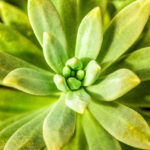 Winter Care Tips: How to Help Succulents Survive the Cold Season
Winter Care Tips: How to Help Succulents Survive the Cold SeasonSigns of temperature stress
When succulents experience temperature stress, they often exhibit signs that indicate their discomfort. Some common signs include:
- Leaf discoloration: The leaves may turn brown or develop brown spots.
- Leaf wilting: The leaves may appear wrinkled or shriveled.
- Leaf drop: In extreme cases, the leaves may fall off the plant.
If you notice any of these symptoms, it is crucial to take immediate action to prevent further damage to your succulents.
Protecting succulents from temperature extremes
Here are some steps you can take to protect your succulents from temperature extremes:
- Provide shade: If your succulents are exposed to direct sunlight, consider providing them with some shade during the hottest part of the day. This can be achieved by placing them under a tree or using a shade cloth.
- Maintain proper ventilation: Good airflow is essential for preventing heat buildup around your succulents. Make sure they are not overcrowded and have enough space for air circulation.
- Water properly: Succulents are drought-tolerant plants, and overwatering can lead to root rot and other issues. Ensure you water them correctly, allowing the soil to dry out between waterings.
- Insulate during winter: If you live in a cold climate, consider insulating your succulents by covering them with frost blankets or moving them indoors.
By following these tips and providing the right conditions for your succulents, you can help prevent brown leaves caused by temperature stress and ensure their overall health and vitality.
Fertilize regularly with a balanced succulent fertilizer
One common cause of brown leaves on succulents is a lack of proper nutrients. Succulents, like any other plants, require essential nutrients to thrive and maintain their vibrant colors. Fertilizing your succulents regularly with a balanced succulent fertilizer can help prevent brown leaves and promote healthy growth.
When choosing a succulent fertilizer, opt for a balanced formula specifically designed for succulents. These fertilizers typically contain a mix of essential nutrients, such as nitrogen, phosphorus, and potassium, in the right proportions to support succulent growth.
 Reviving Wilting Succulents: The Power of Proper Care
Reviving Wilting Succulents: The Power of Proper CareIt is important to follow the instructions on the fertilizer packaging regarding the frequency and dosage of application. Over-fertilization can be harmful to succulents and may lead to brown leaves or other issues. Generally, fertilizing once every few months during the growing season is sufficient for most succulents.
When applying the fertilizer, make sure to water your succulents beforehand. This helps prevent fertilizer burn and allows the nutrients to penetrate the soil effectively. Dilute the fertilizer according to the package instructions and apply it evenly to the soil around the base of the succulent.
In addition to regular fertilization, it is crucial to provide your succulents with well-draining soil. Succulents are adapted to arid environments and do not tolerate excessive moisture well. Poorly drained soil can lead to root rot and other problems, which in turn can cause brown leaves. Consider using a specialized succulent potting mix or amending regular potting soil with perlite or pumice to improve drainage.
Remember, while fertilizing can help prevent brown leaves on succulents, it is equally important to ensure they receive adequate sunlight and water. Finding the right balance between these factors is key to maintaining healthy and vibrant succulents.
Repot succulents if they have become root-bound
One common reason for brown leaves on succulents is if they have become root-bound in their current pot. When succulents outgrow their containers, their roots can become cramped and overcrowded, leading to stress and nutrient deficiencies. This, in turn, can cause the leaves to turn brown.
To fix this issue, it is essential to repot your succulent into a larger container. Here's a step-by-step guide on how to repot your succulent:
- Choose the right pot: Select a pot that is slightly larger than the current one to provide enough space for the roots to grow. Make sure the new pot has drainage holes to prevent overwatering.
- Prepare the potting mix: Use a well-draining potting mix specifically formulated for succulents. You can also create your own mix by combining equal parts of potting soil, perlite, and coarse sand.
- Remove the succulent from its current pot: Gently tap the sides of the pot or squeeze it to loosen the soil. Carefully lift the plant out, supporting the base and avoiding any damage to the roots.
- Inspect the roots: Check the roots for any signs of rot or damage. Trim away any brown or mushy roots using sterilized pruning shears.
- Place the succulent in the new pot: Position the succulent in the center of the new pot and fill the surrounding space with the prepared potting mix. Gently press the soil around the roots to secure the plant.
- Water sparingly: After repotting, water the succulent lightly, allowing the soil to soak up the moisture without becoming waterlogged. Avoid overwatering, as this can lead to root rot.
- Provide adequate sunlight: Place the repotted succulent in a location that receives bright, indirect sunlight. Succulents thrive in bright light conditions but may suffer from leaf burning if exposed to intense, direct sunlight.
By repotting your root-bound succulents, you are providing them with the room they need to grow and thrive. This will help alleviate any stress on the plant and prevent further browning of the leaves.
 The Potential Risks of Repotting Succulents: Can It Harm or Kill Them?
The Potential Risks of Repotting Succulents: Can It Harm or Kill Them?Frequently Asked Questions
1. Why are the leaves on my succulent turning brown?
Brown leaves on succulents can be a sign of overwatering, sunburn, or pest infestation. Evaluate the watering schedule, lighting conditions, and check for any signs of pests to identify the cause.
2. How often should I water my succulents?
Succulents require well-draining soil and should be watered only when the top inch of soil is dry. Typically, this means watering every 1-2 weeks, depending on the climate and humidity levels.
3. How can I prevent sunburn on my succulent leaves?
To prevent sunburn, gradually introduce your succulents to direct sunlight by placing them in partial shade initially. Additionally, provide them with some protection during the hottest hours of the day or move them to a location with filtered light.
4. What should I do if I suspect a pest infestation?
 Why Did My Succulent Leaf Fall Off? Causes and Solutions
Why Did My Succulent Leaf Fall Off? Causes and SolutionsIf you suspect a pest infestation on your succulents, isolate the affected plant to prevent the spread to other plants. Identify the type of pest and use appropriate organic insecticides or natural remedies to control the infestation.
If you want to read more articles similar to Fixing Brown Leaves on Succulents: Troubleshooting Guide, you can visit the Care and Maintenance category.

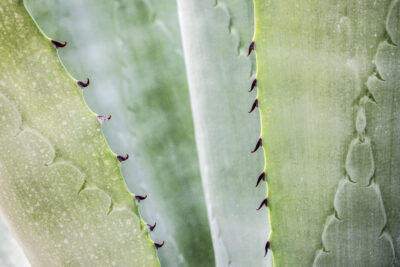



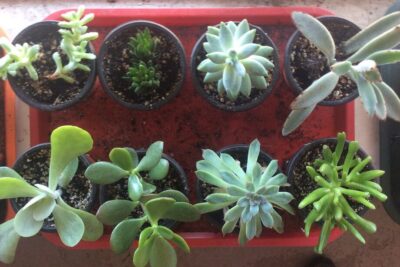
You Must Read